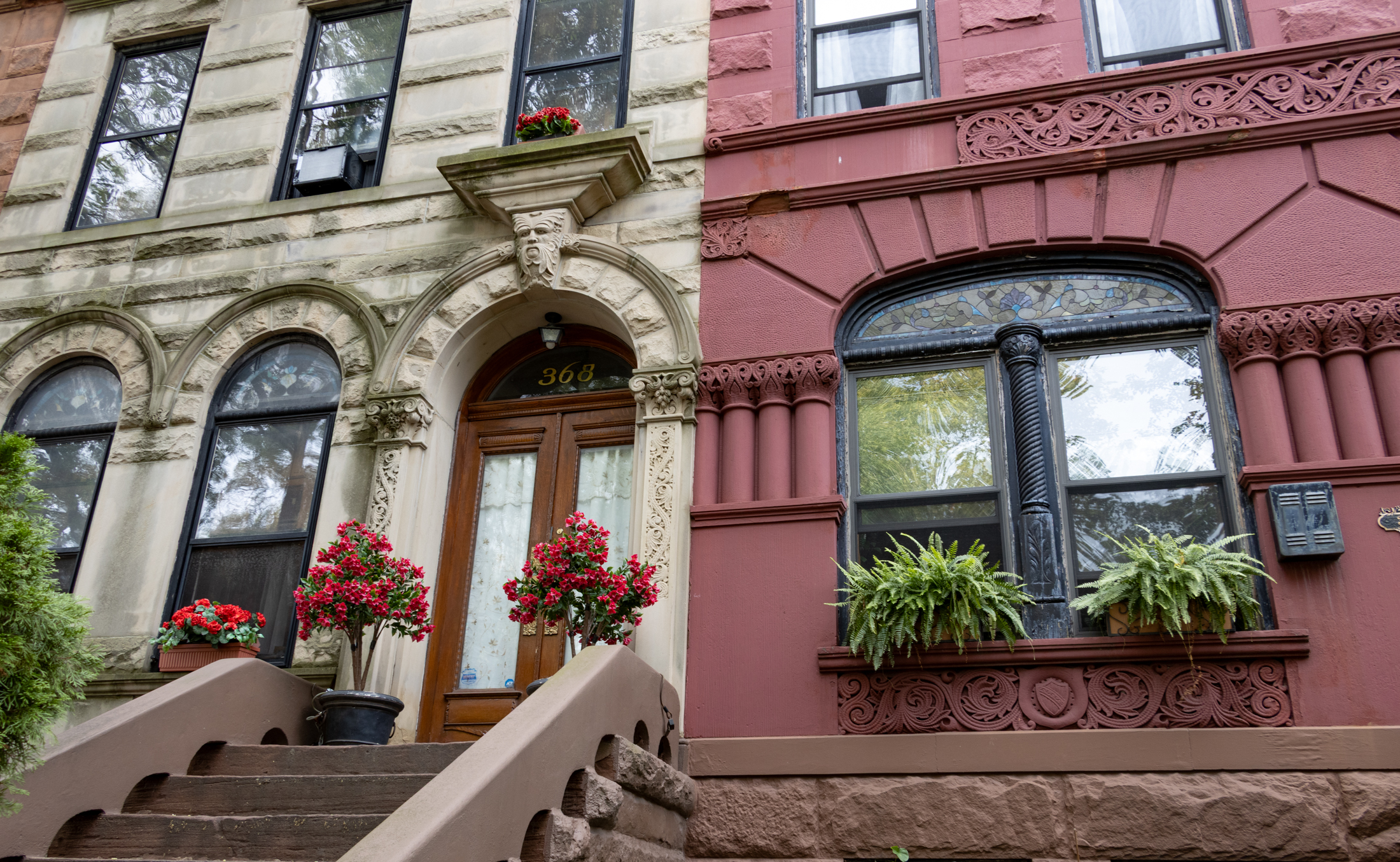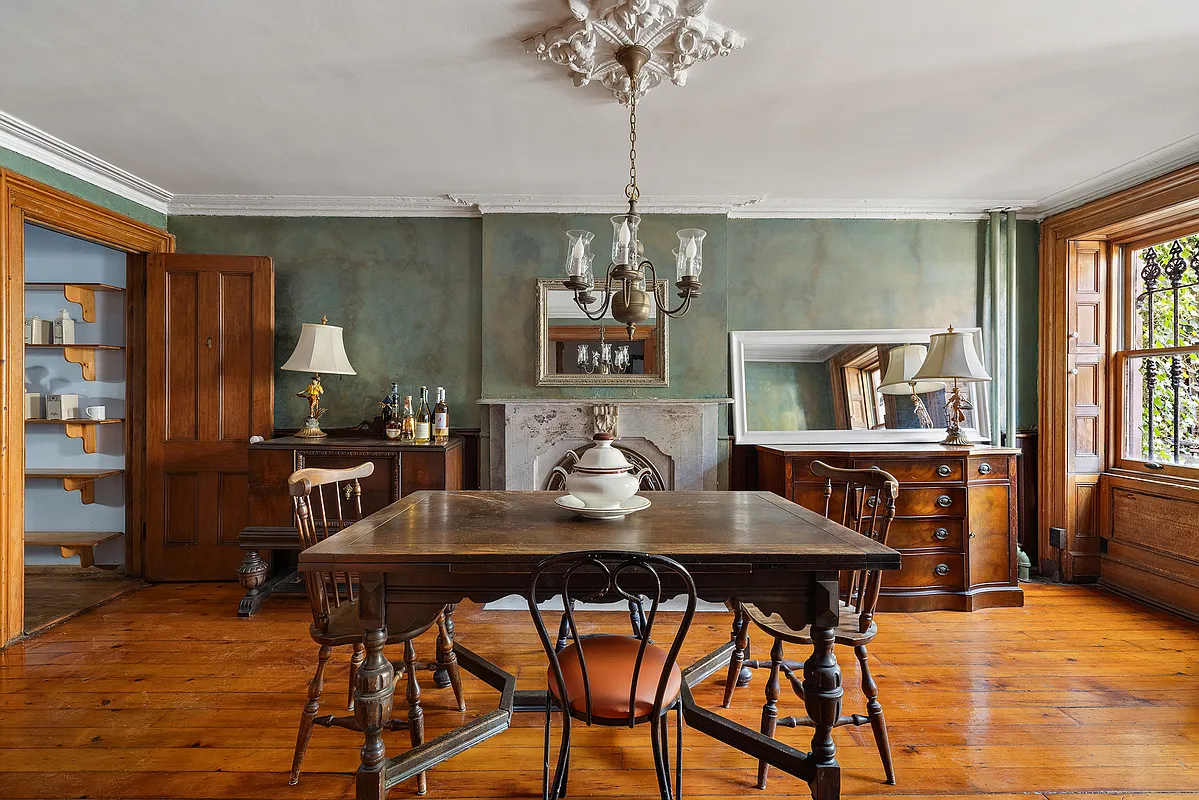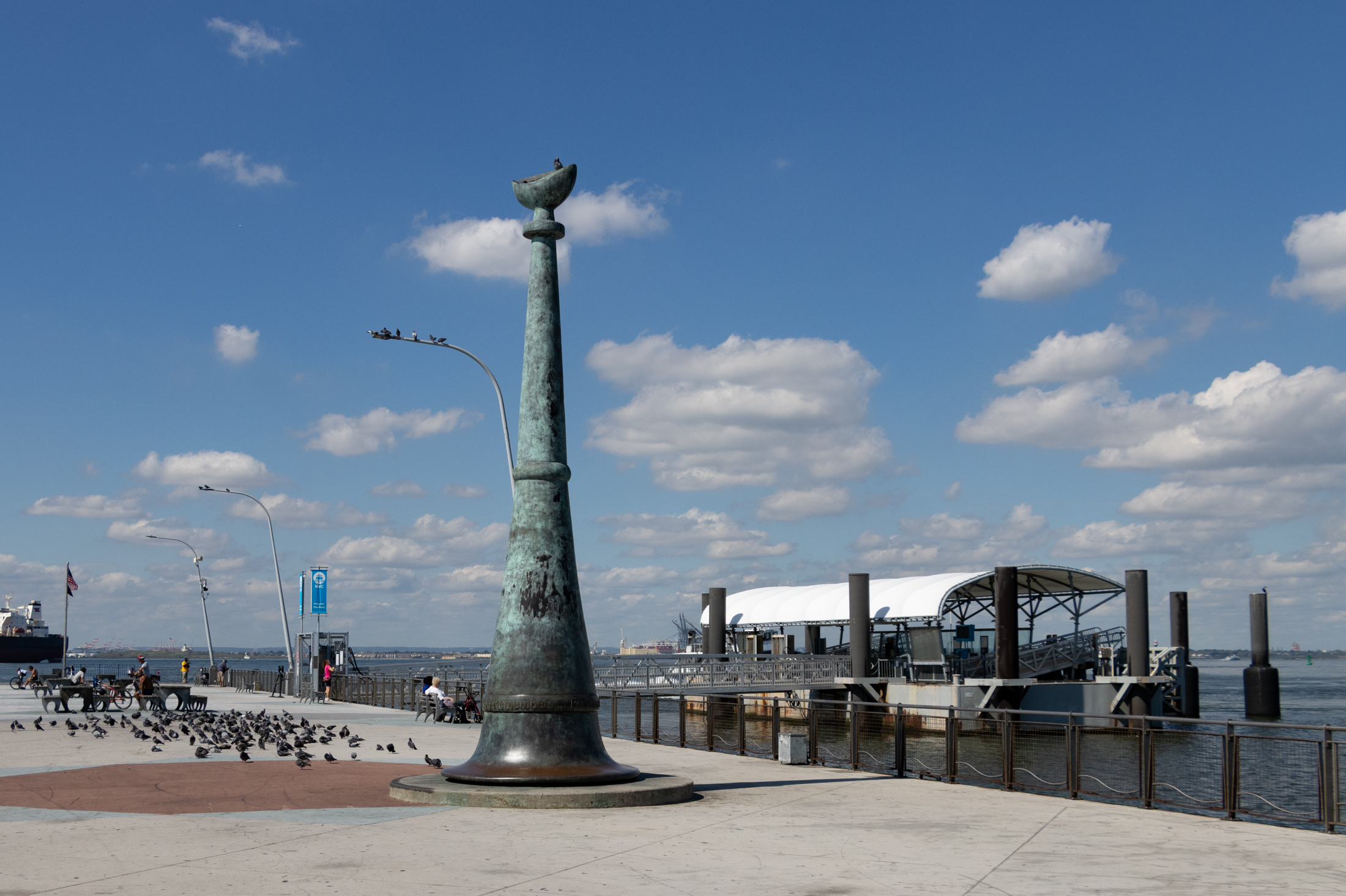Building of the Day: 161 Lefferts Place
Brooklyn, one building at a time. Name: Private House Address: 161 Lefferts Place Cross Streets: Classon and Franklin Avenues Neighborhood: Bedford Stuyvesant Year Built: 1865 Architectural Style: French Second Empire Architect: Unknown Landmarked: No, but on the State and National Register of Historic Places as part of Clinton Hill South (1986). The story: The National…

Brooklyn, one building at a time.
Name: Private House
Address: 161 Lefferts Place
Cross Streets: Classon and Franklin Avenues
Neighborhood: Bedford Stuyvesant
Year Built: 1865
Architectural Style: French Second Empire
Architect: Unknown
Landmarked: No, but on the State and National Register of Historic Places as part of Clinton Hill South (1986).
The story: The National Register of Historic Places application calls this neighborhood Clinton Hill South; old timers still call this block part of Bed Stuy. Lefferts Place is isolated from Clinton Hill by Atlantic Avenue, but parts are far enough from traditional Bed Stuy borders to warrant some kind of special neighborhood name. This area was once owned by the Lefferts family, who owned most of the areas now called Bedford Stuyvesant and Crown Heights, giving the street its name. As Brooklyn spread out from beyond the Heights, this area was seen as suburban, and by the 1850’s, freestanding country “villas”, such as the famous yellow house up the street at 70 Lefferts Place, began to be built. The desirability of the neighborhood rose, in part, by the nearby railroad to Long Island, and the horse trolley line on Fulton Street, thus insuring an easy commute.
By the 1860’s, speculative row houses were starting to go up, as well as detached and semi-detached Second Empire style townhouses, like 161 Lefferts Place. By 1900, the neighborhood was saturated, completely filled with brownstone rows of several different styles, some by some of Brooklyn’s best known architectural firms, as well as flats buildings, joining the free standing villas, and semi-detached townhouses. The neighborhood was comfortably middle class, or better, the larger houses attracting many people of means.
By 1895, the house was home to a Captain David S. Babcock, a maritime captain. He and his wife had six sons. One of the Babcock sons was a well-known naturalist, another, a colonel. The Captain died at home in 1895, and was buried with honors at Green-Wood. The family must have immediately sold the house, because by 1902, the house belonged to its most famous resident, Charles Dow, who lived here with his wife and two daughters. Dow was editor in chief of the Wall Street Journal, and founder of the news agency that printed it, Dow, Jones & Co. He died here in December of 1902, of coronary thrombosis. He was only 51.
Flash forward to the late 1970’s, early ‘80’s…
…when a city photograph shows this house an abandoned wreck. City records show the house going HUD by 1976, and the City in 1982. It was purchased in 1987, fixed up, and later sold in 2007. The Property Shark photo shows the house a month before the sale. The difference between abandoned and today is like night and day. Some of their restorations are not historically accurate, but who is going to quibble? The house now has curb appeal; the lot no longer looks abandoned, covered by trees and overgrowth. Second Empire houses have gracious lines, fine detail, large windows and great gravitas. The owners have made this one a painted lady, a bit of color on a street that really needs it. Like any good stock, a house can come back with patience, time and money. Charles Dow would probably approve. GMAP








“to do some real research on the church.”
Is this where I ask about what the frills were, and if we are getting them now?
glad we got that cleared up!
at the expense of poor Mr. Dow’s thread.
one more thing that is neither here nor there, but I think the word “thrombosis” is a great word. I try to work into conversation whenever i can.
for example when referring to something benson wrote, or when noting the current sale price of a walkup flat in Fort Greene.
mopar, duly noted. I agree that the front could possibly be late Victorian, it is obviously a complicated little building that is stumping the stars, including the formidable MM who is the best researcher around. That’s the fun of old buildings, they are not easy to understand, just like history.
MM, please note that c and I agree on the age of yesterdays’ BOTD.
No way Jose 1901.
Yeah, and also another little detail, landmaps from 1897 and 1908 both show the exact same church on the same site, same outline, “2nd Unit. Presby.” Please no more botd until we get boyd straightened out.
c
SCUSE ME! The Department of Buildings does have the correct date of practically every building – in Brooklyn, 1868 and later. It’s just a question of whether or not they will give it to you.
dodgeville
I see. The “green” justification.
“and there was definitely a Presbyterian Church there before 1900. ”
Yeah, and Second United was holding services there through 1902 with nary a peep of any demolition before midnight December 31st.